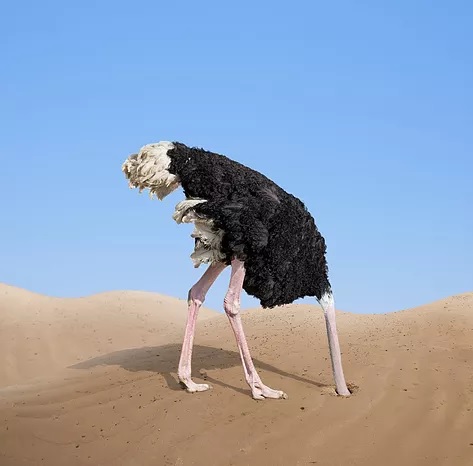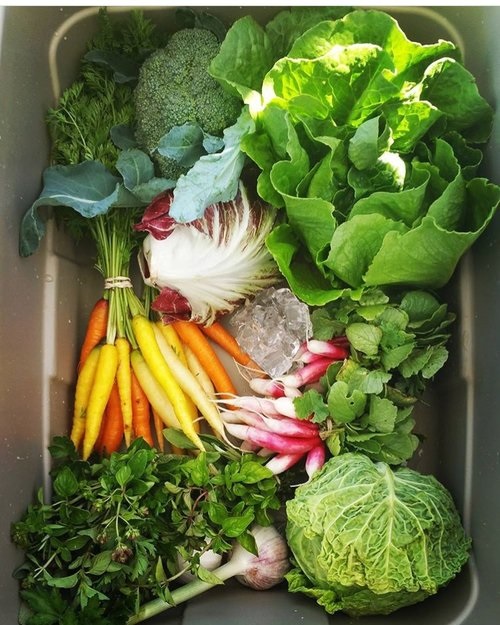April 11, 2018
The food system in America is out of control. And a bit overwhelming. How can you eat in a way that aligns with your values? How can you ensure you are doing as much as you can to slow down the proliferation of food production techniques that harm the environment, communities, and the health of you and your neighbors? How would one even go about starting to change the way they eat? This post should get you started. It provides tips, resources, and warnings to help you navigate the process of eating intentionally. Don’t just eat what is handed to you, eat what is good for you. Eat food you can be proud of. Spend money with food producers who are making the world a cleaner, healthier, and happier place for all people, animals, and plants.

1. Pull Your Head Out… of the Sand:
When talking food with friends and acquaintances, I have encountered a strange phenomenon: some people seem to really NOT want to know about the sources of their food. I suppose it’s a typical case of “ignorance is bliss.” Maybe they are afraid that if they knew the truth, they would be so horrified that they couldn’t bring themselves to eat ANYTHING. I’m fairly certain that they all suspect that something isn’t quite right, but they are just afraid to jump down the rabbit hole–worried it will be far worse than they suspected.
Anyone with Netflix is likely aware of countless food documentaries with ominous titles. Think: “Fat, Sick, and Nearly Dead,” “Farmageddon,” and “Killer at Large.” While watching those–and others–can certainly open your eyes, that eye opening might come in a too-violent manner. Graphic images of animal abuses and disgusting conditions are hard to see. I suggest starting with a few books. Read The Omnivore’s Dilemma: A Natural History of Four Meals. Seriously. Just do it. Not only is this a fascinating book and an entertaining story, but it manages to point out some of the drawbacks of our current food system without leaving you ready to swear off food altogether.
Also check out Folks, This Ain’t Normal: A Farmer’s Advice for Happier Hens, Healthier People, and a Better World. This one will point out the drastic way that our food system has changed in a very short period of time and provide some common sense ways that you can combat this scary trend. Salatin is down-to-earth and super pragmatic. I can also credit him with starting my obsession with pasture-raised food products. If you want to know where we’re coming from here at Metz Meadows, read these two books and you’ll completely understand.
You owe it to yourself and your family to get informed. This information is readily available and will change the way you look at the world and your diet. Change is hard. I know. Take it slow, but start by getting informed.

2. Baby Steps
Dr. Leo Marvin had some great advice in What About Bob?: take things one step at a time. After you get familiar with some of the oddities and atrocities of modern food production, decide if any of the practices you learn about strike you as particularly unacceptable. Alternatively, decide if any of the cleaner practices you hear about seem particularly logical, environmentally friendly, vital, or worth pursuing. Search the internet for products or businesses that follow these processes.
Do not try to go 100% clean tomorrow. Do not throw out everything in your kitchen and go on a shopping spree at Whole Foods. Pick one or two items that really resonated with you during your research phase and swap out the product with a responsible alternative. Take it nice and easy. See how better products make you feel. See how you like the taste (give it a few tries before making a final judgment). See if paying the likely higher price makes sense for you. Make a small change permanent and then move on to the next!
3. Read Labels
Here’s an ingredients from a loaf of typical “bread” sold at big grocery stores across the country: > >unbleached enriched flour (wheat flour, malted barley flour, niacin, reduced iron, thiamin mononitrate, riboflavin, folic acid), water, high fructose corn syrup, yeast, contains 2% or less of each of the following: calcium carbonate, soybean oil, wheat gluten, salt, dough conditioners (contains one or more of the following: sodium stearoyl lactylate, calcium stearoyl lactylate, monoglycerides, mono- and diglycerides, azodicarbonamide, enzymes, ascorbic acid), vinegar, monocalcium phosphate, yeast extract, modified corn starch, sucrose, sugar, soy lecithin, cholecalciferol (vitamin d3), soy flour, ammonium sulfate, calcium sulfate, calcium propionate (to retard spoilage).
What is all this stuff? When I make bread at home, I use three ingredients and three ingredients only: flour, water, salt. This junk they sell in the stores can hardly be called bread. The problem is that the producers of such “food” are more concerned with shelf-life, transportability, and cost than they are with providing you sustenance for your body.
You’ll also notice that food companies put buzz words on their labels to make you feel like you are buying something that you actually aren’t. Some of these words are regulated, and some aren’t, but remember: the definitions of these words are agreed upon by the biggest players in these industries and they will never agree to a definition that will hurt their bottom line. They tweak the definition of these terms until they are virtually meaningless. Watch out for “healthy,” “all natural,” and “made with:” in particular.
4. Search out Products that Fit your Values
Think that grassfed animals are healthier happier? Want organic, no till, or pesticide free produce? Fair-trade? Non-GMO? Humane certified? Look for them! Most of the dirty practices used to produce food these days are a consequence of living in a time that is really good for products (a concept borrowed from Daniel Quinn, author of Ishmael:A Novel, another life-changing book). Luckily, there are some benefits to this situation: namely, our system provides good opportunities for quality and niche products as well. You probably already know you can find beef from cows treated to beer massages and pampering, coffee beans that come from a single farm in a particular country, and honey made from nectar collected only from California wildflowers… these are just a few specific examples. The point is: if you’re looking to buy, there is likely someone looking to sell it. Search it out. Be specific.

5. CSAs, Farm Stands, Local harvest
I’m sure I live in a bit of a bubble: surrounded by people and pages that are into the same kind of things that I am. Yet, it always surprises me every time I mention a “CSA” and someone has NO IDEA what I am talking about. Community Supported Agriculture. I’m sure you are aware of the idea: each week a local farm puts together and delivers a box of their freshest veggies to your door step. This is a great way to get local, high quality items of known origin. Pay attention to sourcing. Since a typical farm can’t usually provide enough variety to keep customers satisfied, they likely are getting some of their content from other sources.
Take a drive through any local rural area and you’ll see stands all over the place, with all kinds of offerings. Stop in. Talk to anyone you see there. Ask about something in particular you happen to be looking for. These locals will know the area and might be able to help.
Finally, if the idea of randomly driving around the country side looking for something specific is not appealing to you, there happen to be plenty of websites devoted to helping people find local and quality food sources. Check out: www.localharvest.org. You’ll find this to be a robust resource for locating nearby farmers who are selling what you’re buying!

6. Grow it Yourself
Of course, the best way to know what goes into the production of your food is to simply grow it yourself. Whether you are a seasoned gardener or fear that “everything I plant dies!” every bite that you take from something planted, cared for and harvested by your own efforts is divine. You’d be surprised. There are SO many resources for getting started and honing your gardening skills.
If you’re a black thumb, check out All New Square Foot Gardening. This book is all about simplicity. It’s a great place to start.
If you’re ready to dig a bit deeper (without tilling), Lasagna Gardening: A New Layering System for Bountiful Gardens: No Digging, No Tilling, No Weeding, No Kidding! teaches a fantastic method for building soil fertility from the start.
Finally, if you’ve heard of permaculture and are ready to get your hands dirty building productive food systems with as little outside input as possible, there’s no better book than Toby Hemenway’s Gaia’s Garden: A Guide to Home-Scale Permaculture, 2nd Edition. This is detailed enough to really create some amazing systems while leaving out some of the overly technical textbook feel of other permaculture manuals.
7. Don’t Fool Yourself
Please don’t go into this project thinking that you’ll be able to save the world right away. Don’t think that with a little research, you’ll be able to feel 100% good about the food that comes into your house and body.
You won’t be able to take down these practices singlehandedly, either. As long as people continue to turn a blind eye and buy food products based on price alone, the practices will continue to exist. Also, don’t fool yourself into thinking that people will view you as saintly protectors of the world. Nor will they agree that you are woke-AF!
8. Don’t Preach
Along those lines, your values aren’t everyone’s values. Just because you have decided not to eat factory farmed chicken eggs doesn’t mean that everyone else must follow suit. Nor should they be subjected to your rants about the matter. If people ask: great. Share away. Other than that, continually talking about how you don’t eat this and you don’t eat that will stain you with that elitist label typically reserved for evangelical vegans. We are talking about opinions here. How people should eat is largely a matter of philosophy and far from an exact science at this point. So feel free to talk about these things–civilly–and educate when people are open to learning, but the last thing we need is for another person who wants to shove their beliefs down other people’s throats.
~Patrick

